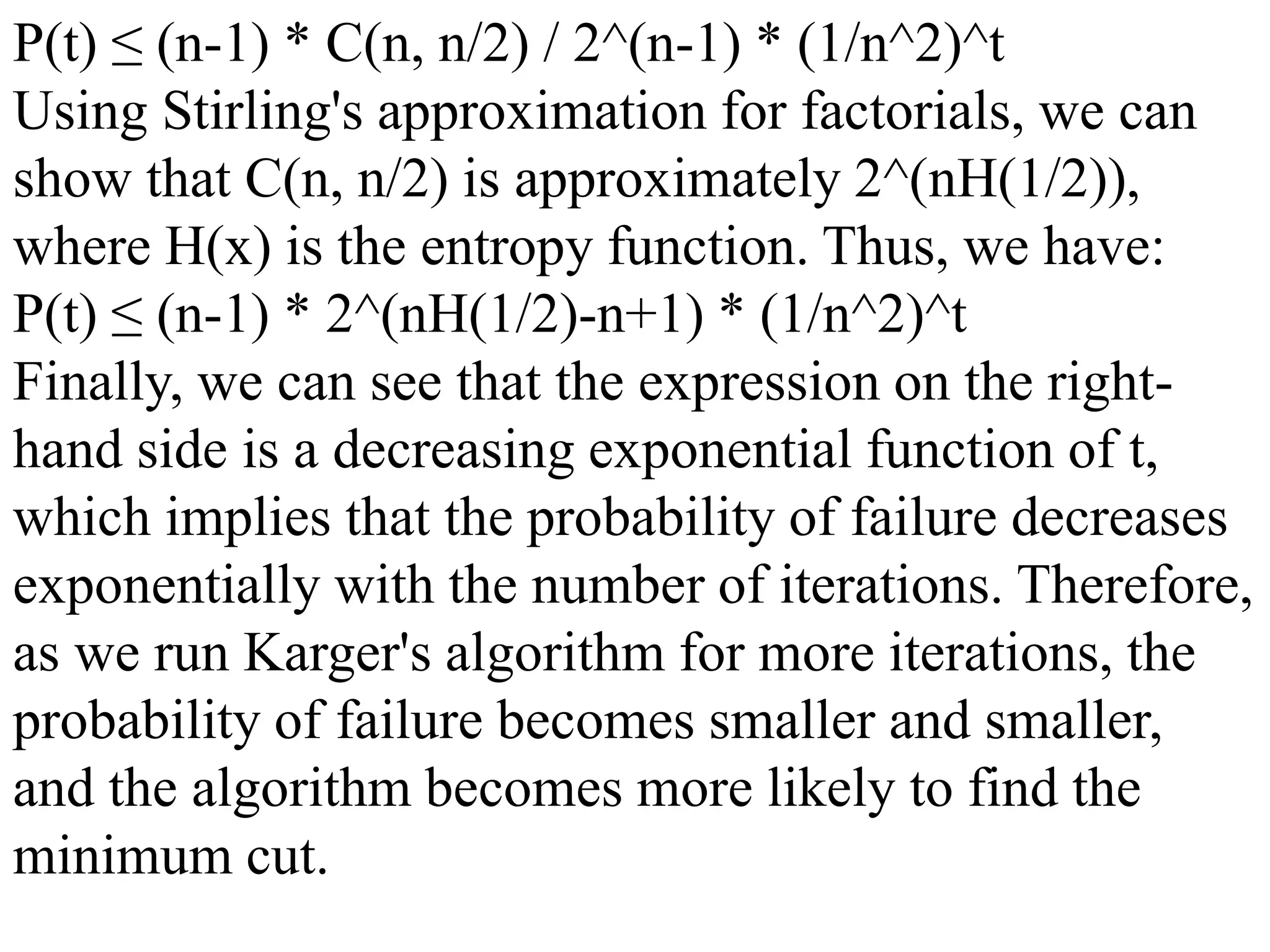Karger's min-cut algorithm can be adapted to find the minimum k-cut in an undirected graph using the Karger-Stein algorithm, which recursively partitions the graph and identifies minimum cuts. The algorithm has a running time of O(n^2 log k) and is useful for applications like VLSI design and image segmentation. Additionally, the probability of Karger's algorithm failing to find the minimum cut decreases exponentially with the number of iterations, making it more reliable with increased runs.

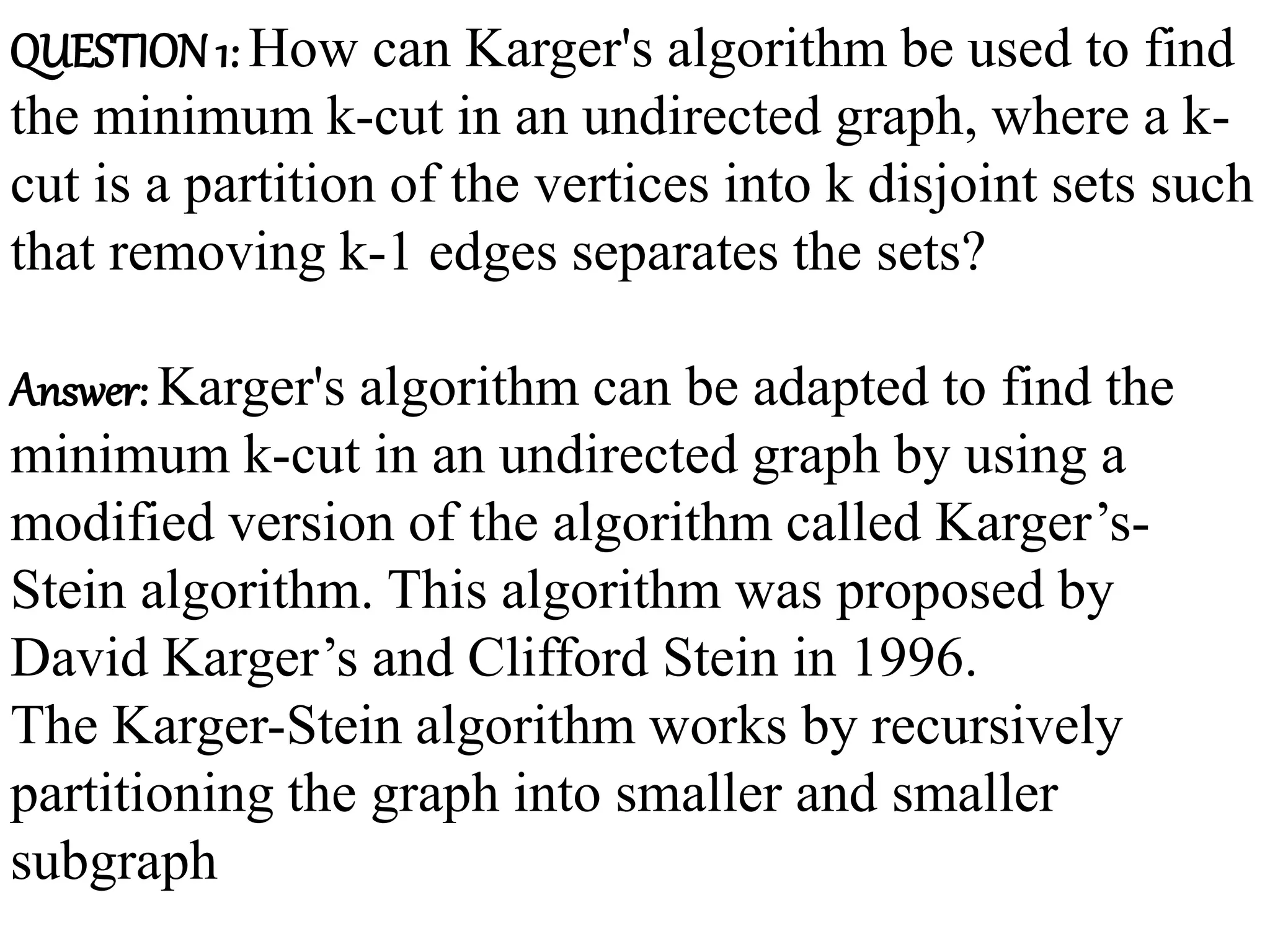
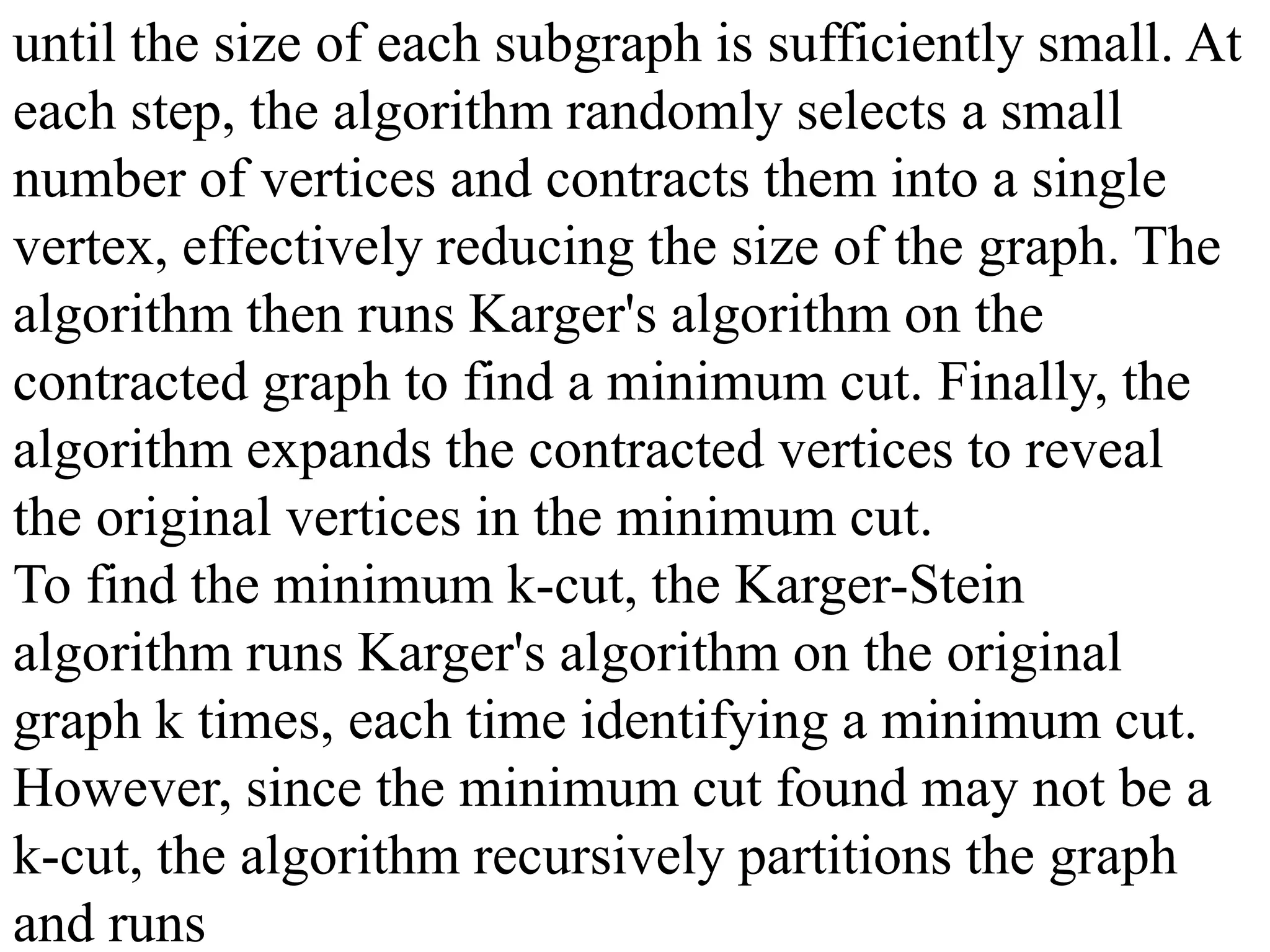
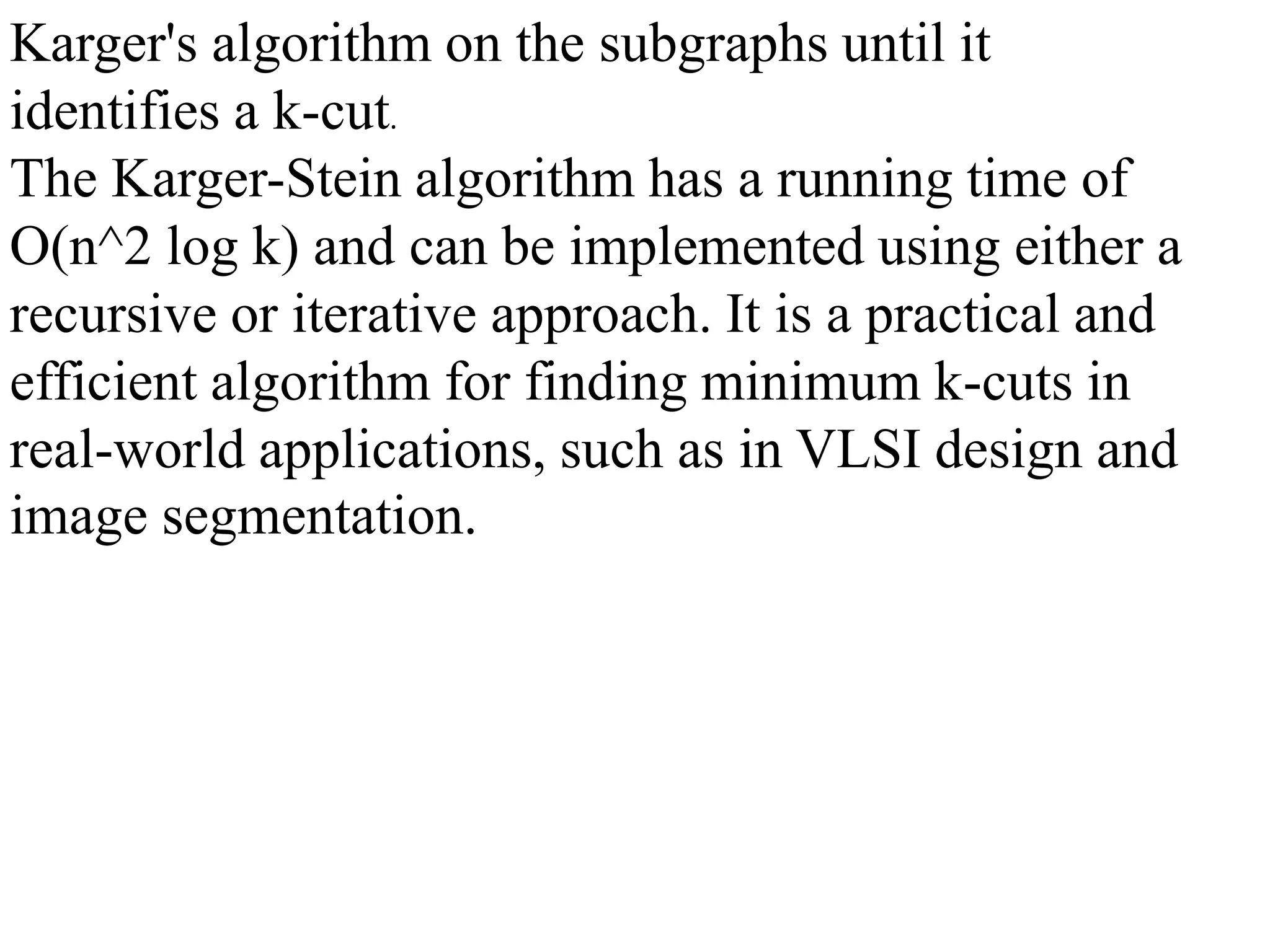
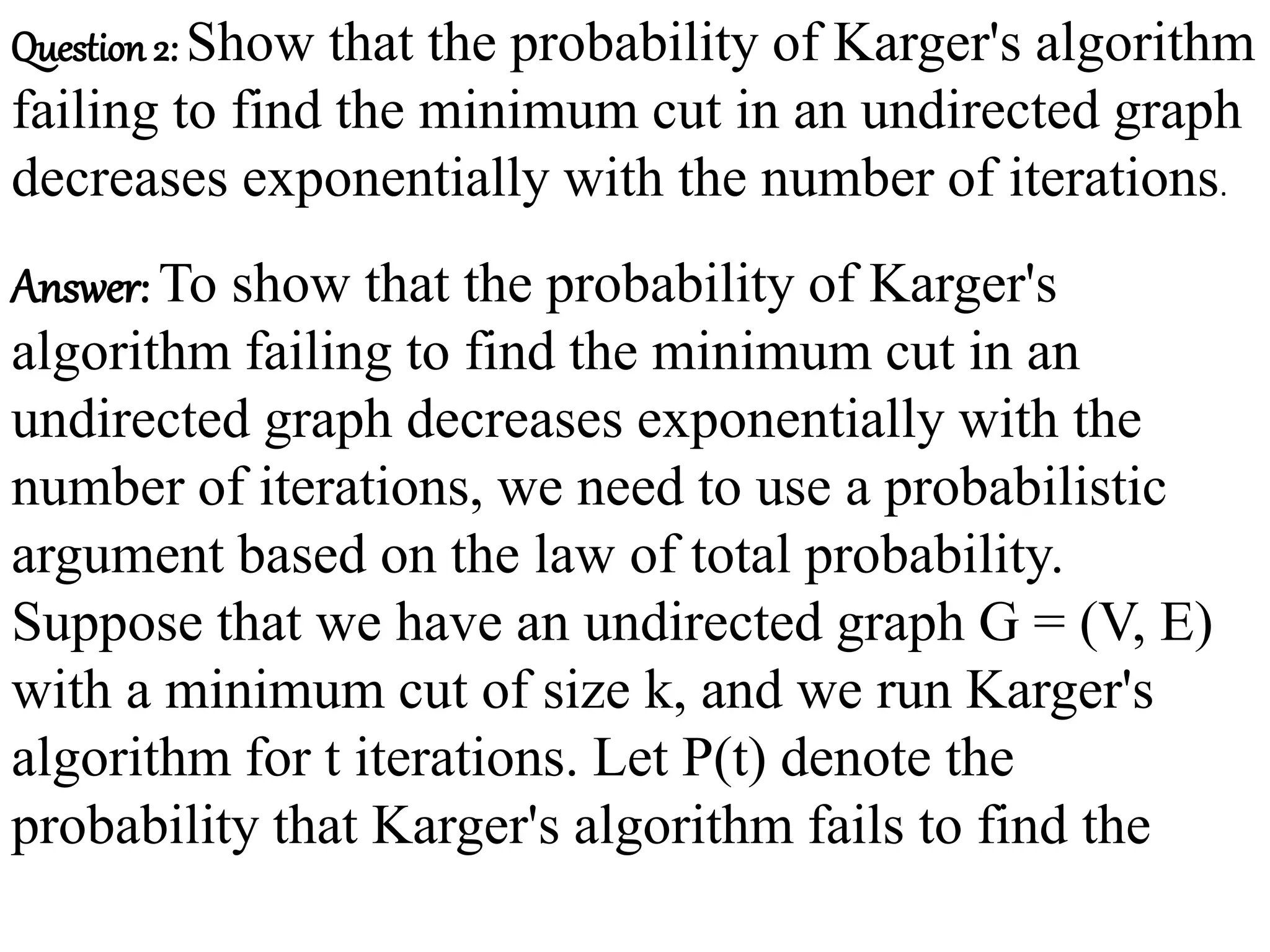
![minimum cut after t iterations. Then, by the law of
total probability, we have:
(t) = Σi=1,k-1 Pr[min-cut has size i] * Pr[Karger's
algorithm fails to find a cut of size i after t iterations]
Here, Pr[min-cut has size i] denotes the probability
that the minimum cut in the graph has size i. Since
there are C(n, i) ways to choose a cut of size i, and
there are C(n-1, i-1) ways to choose a cut that
separates a particular vertex from the rest of the graph,
we have:
Pr[min-cut has size i] = C(n, i) * C(n-1, i-1) / 2^(n-1)
This expression gives the probability that a randomly
chosen cut has size i.](https://image.slidesharecdn.com/algorithmhomeworkhelpppt-230429105953-5576b34a/75/algorithm-homework-help-ppt-pptx-6-2048.jpg)
![Now, let us consider the second term in the equation
for P(t), which is the probability that Karger's
algorithm fails to find a cut of size i after t iterations.
By the analysis of Karger's algorithm, we know that
the probability of failure after t iterations is at most
1/n^2. Therefore, we have:
Pr[Karger's algorithm fails to find a cut of size i after t
iterations] ≤ (1/n^2)^t
Substituting these expressions into the equation for
P(t), we get:
P(t) ≤ Σi=1,k-1 C(n, i) * C(n-1, i-1) / 2^(n-1) *
(1/n^2)^t
Now, we can simplify the expression by using the fact
that C(n, i) is maximized when i = n/2 (or n/2-1 when](https://image.slidesharecdn.com/algorithmhomeworkhelpppt-230429105953-5576b34a/75/algorithm-homework-help-ppt-pptx-7-2048.jpg)
